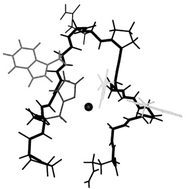Biological inorganic and bioinorganic chemistry of neurodegeneration based on prion and Alzheimer diseases
Abstract
A change of the prion

a
Department of Biology and Biochemistry, University of Bath, Bath, UK
E-mail:
bssdrb@bath.ac.uk
b
Faculty of Chemistry, University of Wrocław, F. Joliot-Curie 14, 50-383 Wrocław, Poland
E-mail:
henrykoz@wchuwr.chem.uni.wroc.pl
A change of the prion

 Please wait while we load your content...
Something went wrong. Try again?
Please wait while we load your content...
Something went wrong. Try again?
D. R. Brown and H. Kozlowski, Dalton Trans., 2004, 1907 DOI: 10.1039/B401985G
To request permission to reproduce material from this article, please go to the Copyright Clearance Center request page.
If you are an author contributing to an RSC publication, you do not need to request permission provided correct acknowledgement is given.
If you are the author of this article, you do not need to request permission to reproduce figures and diagrams provided correct acknowledgement is given. If you want to reproduce the whole article in a third-party publication (excluding your thesis/dissertation for which permission is not required) please go to the Copyright Clearance Center request page.
Read more about how to correctly acknowledge RSC content.
 Fetching data from CrossRef.
Fetching data from CrossRef.
This may take some time to load.
Loading related content
